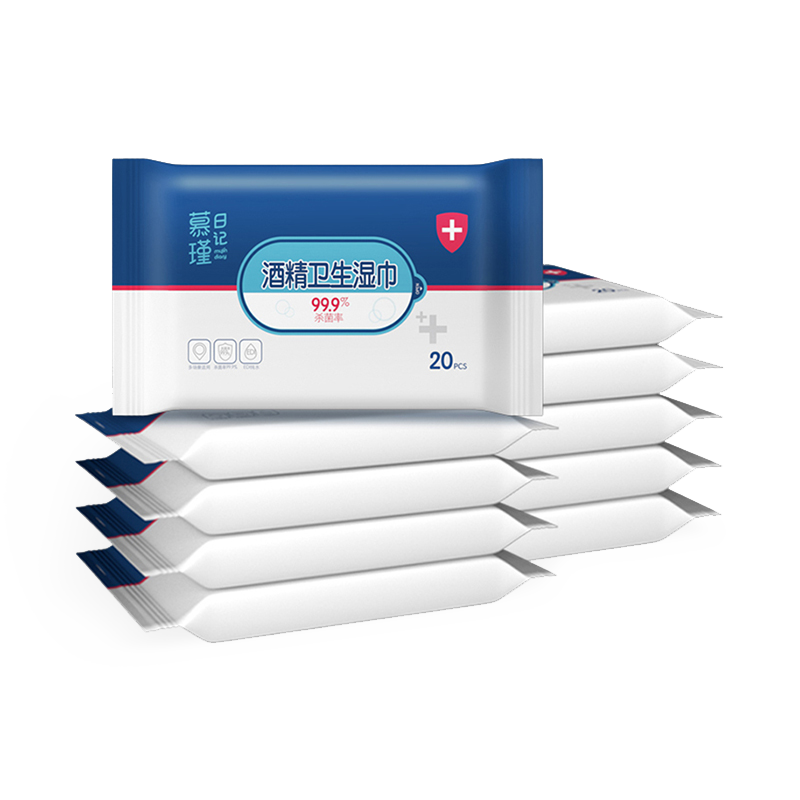Product Consultation
Your email address will not be published. Required fields are marked *
In today’s fast-paced world, cleanliness and convenience go hand in hand. From kitchen countertops to bathroom tiles, homeowners are constantly searching for efficient ways to maintain a hygienic living environment. Among the many cleaning tools available, household cleaning wipes have become one of the most popular solutions. But as lifestyles evolve and environmental awareness grows, one question emerges: Are cleaning wipes still the smartest choice for modern homes?
Let’s take a closer look at what makes these wipes so popular, their materials and benefits, and how they fit into today’s expectations for hygiene, sustainability, and cost-efficiency.
Household cleaning wipes are pre-moistened nonwoven fabrics designed for quick and convenient cleaning. Unlike traditional cloths that require separate cleaners and water, these wipes come ready to use — already infused with cleaning agents, disinfectants, or mild detergents.
The base material of most wipes is nonwoven fabric, typically made from polyester (PET), viscose, or polypropylene (PP) fibers. One common type is needle-punch nonwoven, which combines strength, absorbency, and softness — making it ideal for multi-surface cleaning.
These wipes may also include natural fibers like cotton or bamboo for eco-friendlier versions. The choice of material determines not only the texture and absorbency but also the biodegradability and environmental impact of the product.
The global demand for household cleaning wipes continues to grow — and for good reason. Their convenience, versatility, and effectiveness make them a household essential. Here are a few key factors behind their popularity:
Instant Convenience
No mixing, measuring, or rinsing required. Just pull a wipe, clean the surface, and toss it. Perfect for busy families or professionals.
Hygienic and Disposable
Single-use wipes help reduce the spread of germs, especially during flu seasons or in homes with children and pets.
Versatility
From wiping kitchen counters and dining tables to cleaning appliances, windows, and bathroom surfaces — these wipes handle almost any task.
Pleasant Fragrance and Finish
Many wipes are formulated with gentle scents or natural extracts, leaving a fresh smell and streak-free shine.
Portability
Compact packaging allows for easy storage in drawers, cars, or handbags, ensuring cleanliness anytime, anywhere.
At first glance, a cleaning wipe might seem simple — but its design is the result of careful engineering. The nonwoven base provides the mechanical strength to scrub dirt, while the liquid formulation dissolves and lifts grease, dust, and bacteria from surfaces.
The cleaning solution typically contains:
This combination allows the wipe to perform multiple functions: cleaning, sanitizing, and deodorizing in one step.
The variety of cleaning wipes on the market today reflects different cleaning needs and preferences. Common types include:
All-Purpose Cleaning Wipes
Designed for everyday use on most household surfaces, including plastic, glass, metal, and wood.
Kitchen Degreasing Wipes
Infused with stronger cleaning agents to cut through grease, ideal for stoves, hoods, and countertops.
Bathroom Disinfecting Wipes
Contain antibacterial formulas to kill germs commonly found in bathrooms, such as mold and mildew.
Floor Cleaning Wipes
Larger in size, often compatible with mop systems for quick floor cleaning.
Eco-Friendly or Biodegradable Wipes
Made from natural fibers or compostable materials, appealing to environmentally conscious consumers.
Scented and Unscented Versions
To accommodate sensitive users, fragrance-free wipes are also available.
While cleaning wipes are versatile, they’re not suitable for everything. Surfaces like unfinished wood, untreated leather, or electronic screens may be damaged by moisture or cleaning chemicals. It’s always best to read the label and perform a small test before widespread use.
For delicate surfaces, dry or lightly moistened wipes — especially those made from soft needle-punch nonwovens — are safer options.
This question has become increasingly important. Traditional wipes, made from synthetic fibers, do not decompose easily and can contribute to landfill waste and water pollution. Additionally, some consumers mistakenly flush wipes down the toilet, leading to severe plumbing and environmental issues.
However, the industry is evolving. Many manufacturers are now producing:
Consumers can also make eco-friendly choices by opting for reusable nonwoven cloths that can be washed and reused multiple times — combining convenience with sustainability.
| Feature | Cleaning Wipes | Traditional Cloth + Cleaner |
| Convenience | Ready to use, portable | Requires cleaner and water |
| Hygiene | Single-use, reduces cross-contamination | Reusable but needs frequent washing |
| Environmental Impact | Can be high (synthetic materials) | Lower if reusable cloth is used |
| Cost Efficiency | Higher cost per use | More economical long-term |
| Effectiveness | Good for quick clean-ups | Better for deep cleaning tasks |
For quick, daily cleaning, wipes are unbeatable. But for heavy-duty cleaning, traditional methods remain more cost-effective and sustainable.
The cleaning industry continues to innovate in materials, formulation, and packaging. Here are some emerging trends:
These innovations demonstrate the industry’s commitment to meeting both consumer convenience and environmental responsibility.
When shopping for household cleaning wipes, consider the following factors:
While cleaning wipes can cost more per use than traditional cleaning products, their time-saving and hygienic benefits often justify the price. For many families, they’re a small investment in everyday cleanliness and peace of mind — particularly in kitchens, bathrooms, and high-touch areas.
So, are household cleaning wipes still the smartest choice for modern homes? The answer depends on how you balance convenience, cost, and environmental impact.
There’s no denying their effectiveness and popularity — they make cleaning faster, simpler, and more hygienic. Yet, as sustainability becomes a priority, the best approach may be a hybrid one: using biodegradable wipes for quick clean-ups and reusable cloths for deeper, routine cleaning.
In the end, the smartest choice is the one that keeps your home spotless while keeping our planet clean too.
Your email address will not be published. Required fields are marked *
You can contact to me using this form.
Copyright © 2023 Shanghai Taicikang Industrial Co., Ltd. All Rights Reserved.
